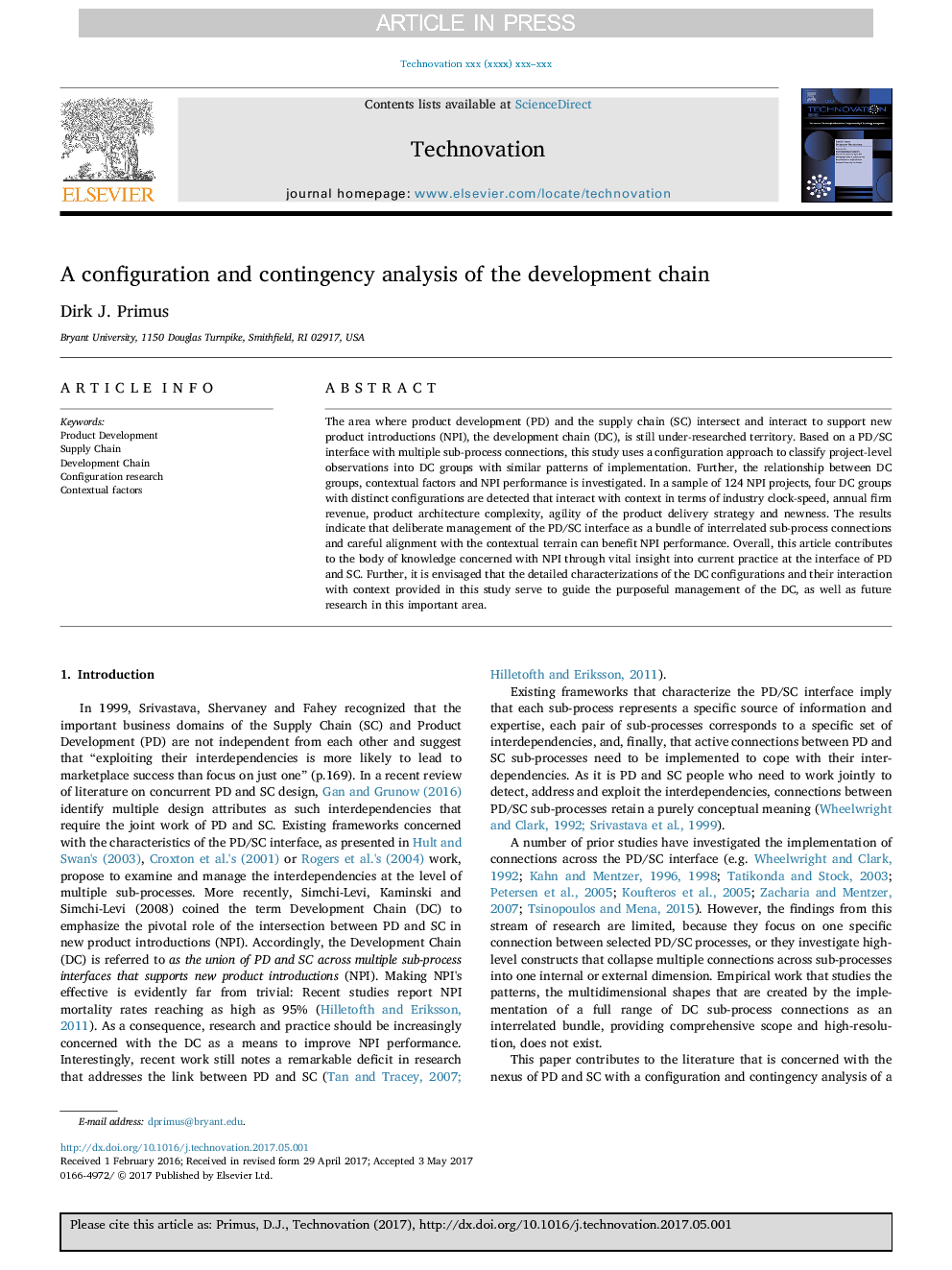ترجمه فارسی عنوان مقاله
تجزیه و تحلیل پیکربندی و احتمالات زنجیره توسعه
عنوان انگلیسی
A configuration and contingency analysis of the development chain
| کد مقاله | سال انتشار | تعداد صفحات مقاله انگلیسی |
|---|---|---|
| 150944 | 2017 | 15 صفحه PDF |
منبع

Publisher : Elsevier - Science Direct (الزویر - ساینس دایرکت)
Journal : Technovation, Volumes 64â65, June 2017, Pages 1-15
ترجمه کلمات کلیدی
توسعه محصول، زنجیره تامین، زنجیره توسعه، تحقیق پیکربندی، عوامل زمینه،
کلمات کلیدی انگلیسی
Product Development; Supply Chain; Development Chain; Configuration research; Contextual factors;

